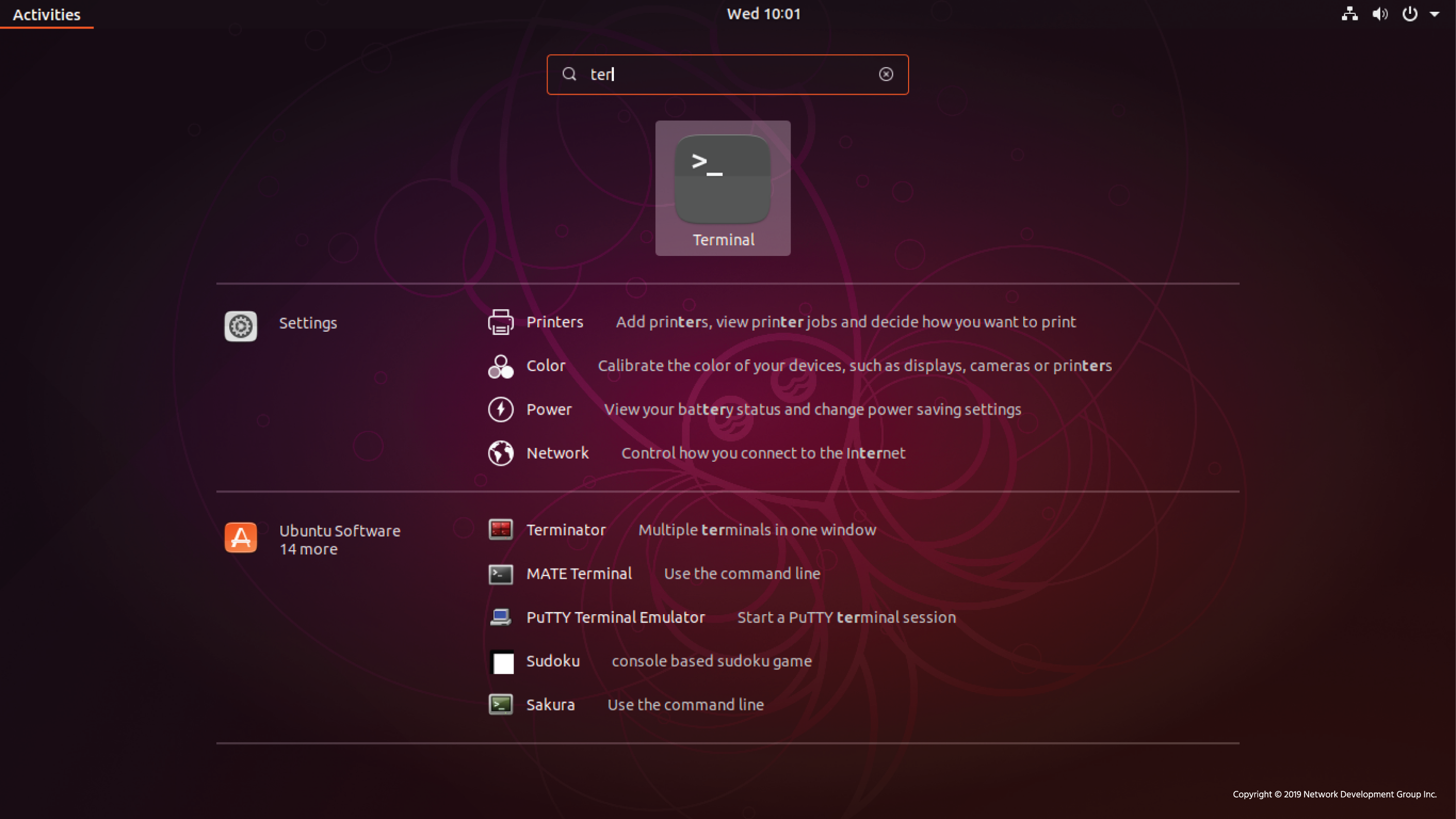3.1.1 Getting to the Command Line
The command line interface (CLI) is a simple text input system for entering anything from single-word commands to complicated scripts. Most operating systems have a CLI that provides a direct way of accessing and controlling the computer.
On systems that boot to a GUI, there are two common ways of accessing the command line—a GUI-based terminal, and a virtual terminal:
- A GUI terminal is a program within the GUI environment that emulates a terminal window. GUI terminals can be accessed through the menu system. For example, on a CentOS machine, you could click on Applications on the menu bar, then System Tools > and, finally, Terminal. If you have a search tools, you can search for terminal, as shown here.

Getting to the Command Line - A virtual terminal can be run at the same time as a GUI but requires the user to log in via the virtual terminal before they can execute commands (as they would before accessing the GUI interface).
Each Linux desktop distribution is slightly different, but the application terminal or x-term will open a terminal window from the GUI. While there are subtle differences between the terms console and terminal window sessions, they are all the same from an administrators standpoint and require the same knowledge of commands to use.
Ordinary command line tasks are starting programs, parsing scripts, and editing text files used for system or application configuration. Most servers boot directly to a terminal, as a GUI can be resource intensive and is generally not needed to perform server-based operations.